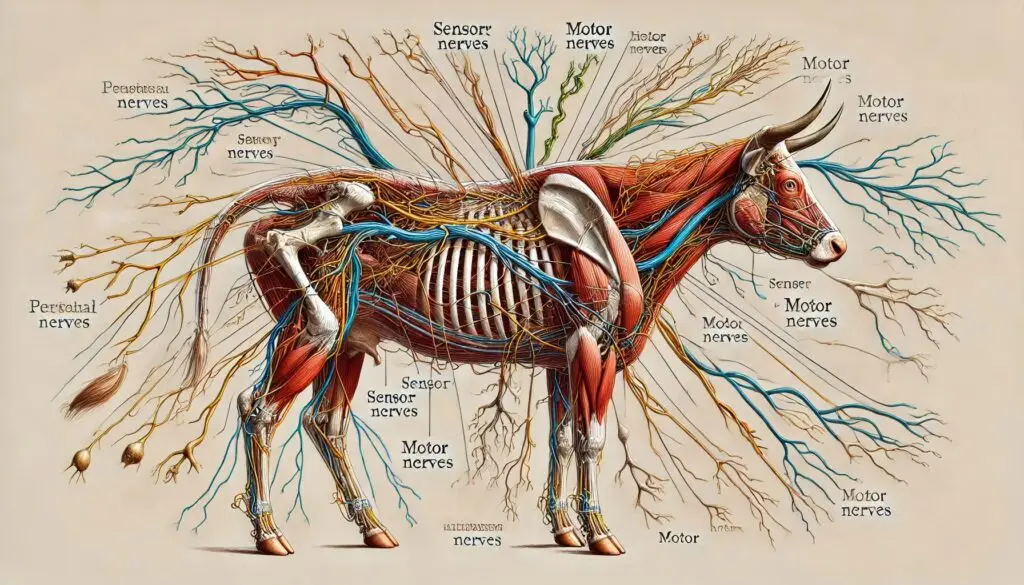Serum Electrolytes in Animals

The Importance of Serum Electrolytes
Serum electrolytes, such as sodium and potassium, play a crucial role in maintaining the normal function of animals’ cells, muscles, and nerves. These electrolytes help maintain fluid balance, regulate blood pressure, and ensure proper nerve function. When there is an imbalance in these electrolytes, it can cause a variety of health issues, ranging from mild muscle weakness to life-threatening seizures.
Electrolytes are essential for maintaining cellular integrity. They facilitate nerve signal transmission and muscle contractions, two key components for an animal’s overall well-being. Electrolyte imbalances often result in conditions like seizures, neuropathies, and various metabolic disturbances.
Understanding the role of these electrolytes in animal health can aid in diagnosing and treating electrolyte disorders. It is vital for veterinarians to monitor electrolyte levels in animals to prevent or manage serious health conditions.
Sodium Levels in Animals
Sodium (Na⁺) is one of the primary extracellular cations that helps regulate fluid balance and blood pressure in animals. It is also important for nerve function and muscle contractions. Any abnormal change in sodium levels can lead to significant health issues.
Hyponatremia: Low Sodium Levels
Hyponatremia occurs when sodium levels fall below the normal range. This can be caused by excessive fluid intake, kidney disease, or heart failure. The imbalance leads to fluid retention inside cells, including brain cells, which may result in neurological symptoms like confusion, lethargy, and seizures. For more on hyponatremia and its effects on the body, check out this article on sodium imbalances. May Refer: NCBI
In severe cases, hyponatremia can cause brain swelling, making prompt treatment essential. Veterinary care often involves controlled sodium replacement through intravenous fluids or oral electrolyte solutions.
Hypernatremia: High Sodium Levels
Hypernatremia refers to an elevated sodium level. It is typically caused by dehydration, excessive salt intake, or certain kidney conditions. Hypernatremia leads to water loss from cells, causing them to shrink. This can impair kidney function and lead to symptoms like weakness, seizures, and increased thirst.
In some animals, salt toxicity or salt poisoning may also cause hypernatremia. Treatment focuses on rehydration and correcting the electrolyte imbalance. Learn more about managing sodium imbalances in animals from this veterinary resource.
Potassium Levels and Their Impact on Animals
Potassium (K⁺) is a critical electrolyte found predominantly inside cells. It is essential for the electrical balance in muscles and nerves. Abnormal potassium levels can significantly affect muscle function and lead to life-threatening conditions.
Hypokalemia: Low Potassium Levels
When potassium levels drop below the normal range, animals may experience hypokalemia. This condition is often caused by kidney disease, vomiting, diarrhea, or the use of diuretics. Symptoms include muscle weakness, lethargy, and poor appetite. More severe cases can result in cardiac arrhythmias or paralysis.
In cases of severe hypokalemia, potassium supplementation through intravenous fluids or injections may be required. You can learn more about hypokalemia management from this link to veterinary guidelines.
Hyperkalemia: High Potassium Levels
Hyperkalemia occurs when potassium levels rise too high. This can be caused by conditions like Addison’s disease, kidney failure, or dehydration. The condition is dangerous because it can cause severe cardiac arrhythmias, which may be fatal if left untreated. Symptoms of hyperkalemia include muscle weakness, slow heart rate, and irregular heartbeat. Immediate veterinary attention is necessary to avoid complications.
Treatment typically involves administering fluids and medications to lower potassium levels. For more on hyperkalemia treatment, visit this veterinary health article.
Neurological and Muscular Effects of Electrolyte Imbalances
Abnormal levels of sodium and potassium can severely affect an animal’s nervous and muscular systems. Both electrolytes are integral to nerve function, as they help transmit signals between nerve cells. When levels are too high or too low, nerve cells can either become overly excitable or fail to transmit signals correctly, leading to neurological issues.
Seizures and Neuropathy
Seizures are one of the most common neurological symptoms associated with electrolyte imbalances. When sodium or potassium levels are disrupted, brain function becomes erratic, leading to seizures. Hyponatremia, in particular, can cause cerebral edema (swelling of the brain), which increases the risk of seizures and neurological deficits.
For more about seizures in animals, check this veterinary article.
Electrolyte imbalances can also contribute to neuropathies—disorders affecting the nerves. The muscles may become weak or unresponsive, which can significantly reduce the animal’s quality of life. Prompt recognition and treatment of these conditions are crucial for preventing long-term nerve damage.
Muscle Weakness and Paralysis
Both hypokalemia and hyperkalemia can lead to muscle weakness. Animals with low potassium levels may have difficulty standing or walking due to muscle weakness, while those with high potassium levels might experience paralysis. Treatment typically involves electrolyte replacement therapy.
To understand more about how electrolyte imbalances cause muscle weakness and how to treat it, read this guide on electrolyte-related muscle issues.
Managing Electrolyte Imbalances in Animals
The management of electrolyte imbalances in animals involves both prevention and treatment. Regular monitoring of serum electrolytes is essential, especially in animals with known health conditions that predispose them to electrolyte disturbances.
Treatment Approaches
Treatment strategies for electrolyte imbalances often include:
- Intravenous fluids to restore proper electrolyte levels
- Oral electrolyte solutions for milder imbalances
- Medications to treat underlying conditions like kidney disease or Addison’s disease
In more severe cases, such as those involving severe dehydration or acute kidney failure, intensive care and close monitoring are required.
Veterinarians should also educate pet owners on the importance of maintaining a balanced diet and preventing overconsumption of salt, which can lead to toxicity and imbalance.
Preventing Electrolyte Imbalances
Preventing electrolyte imbalances involves maintaining good hydration and proper nutrition. Ensuring that animals have access to clean water and a balanced diet rich in essential electrolytes is key to preventing issues like hyponatremia and hypokalemia.
Conclusion:
Serum electrolytes like sodium and potassium are essential for the proper functioning of animals’ bodies. Imbalances in these electrolytes can lead to serious conditions such as seizures, neuropathies, and muscle weakness. Recognizing the symptoms of electrolyte imbalances and seeking prompt veterinary care can help mitigate the risks associated with these disorders.
More From Animal Diseases:
Colic in Horses






Responses